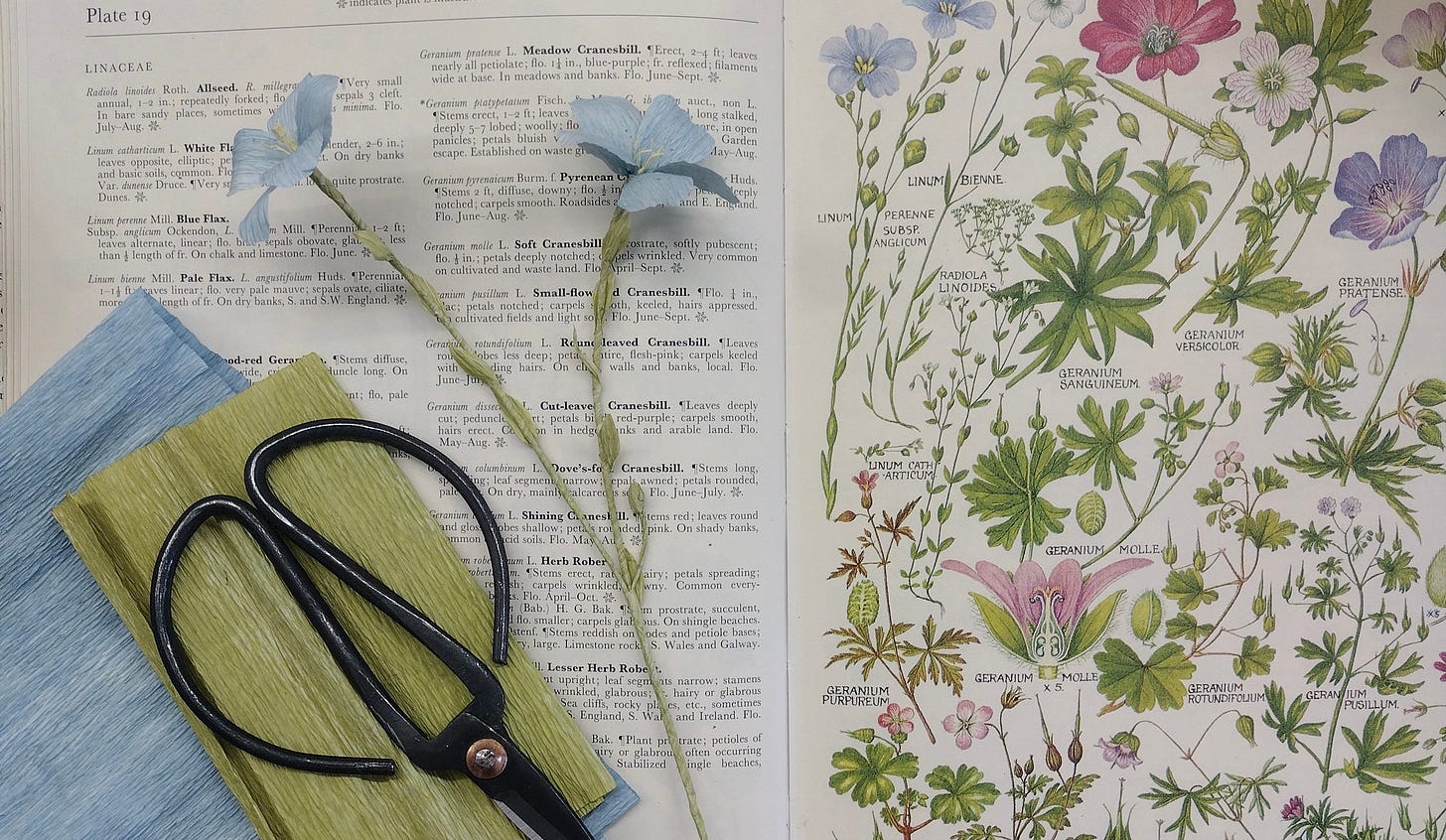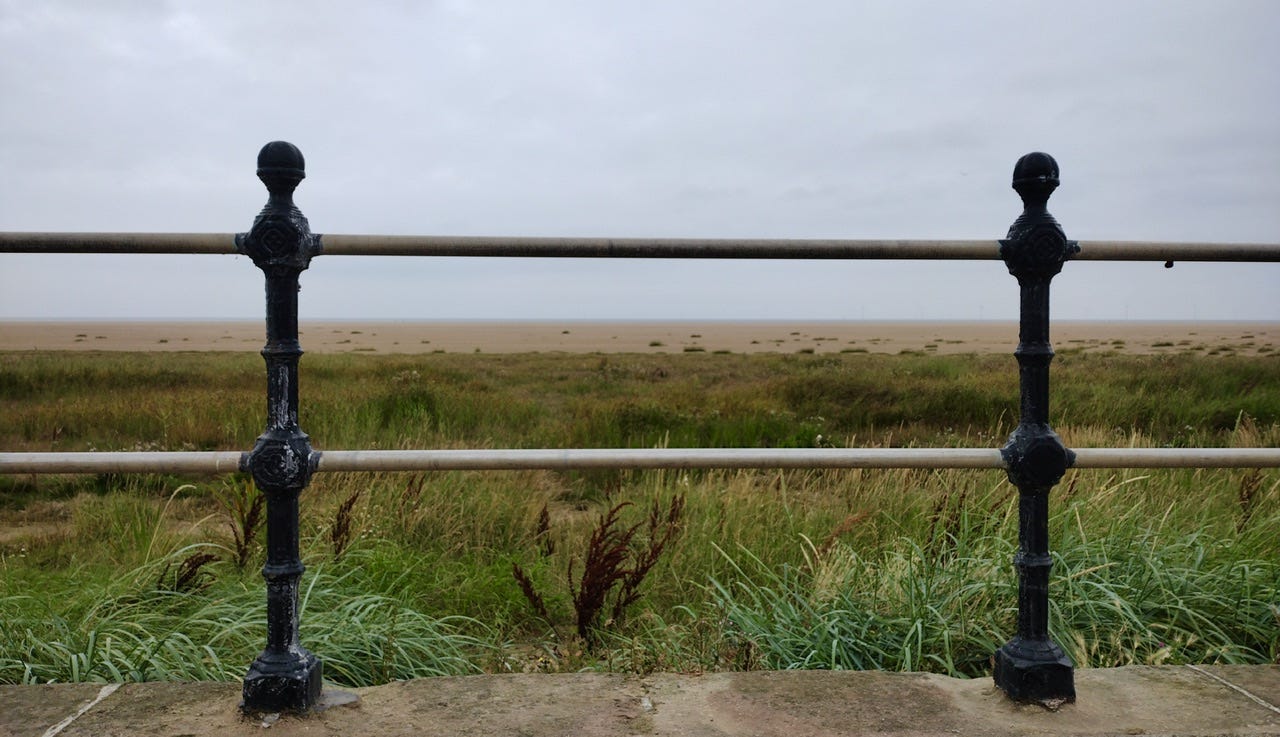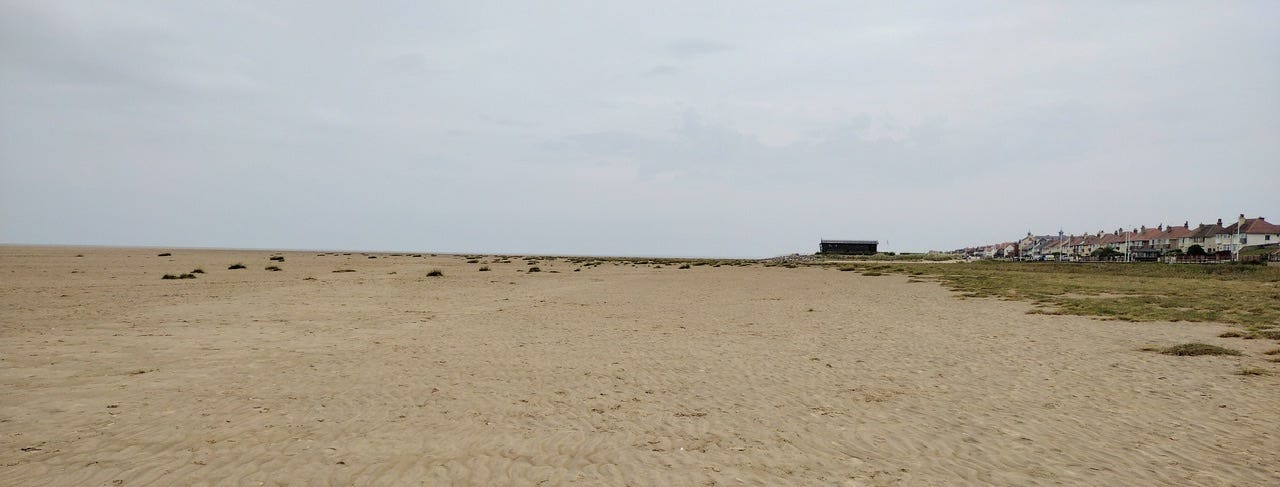
Dear reader,
How are you my friend? Have you enjoyed your summer? Where have you been and what have you discovered? Share your news in the comments, I’d love to get to know you better! If you’re here searching for updates on paper flower classes and craft kits you will find them at the bottom of the letter. But please do read on!
If you spent the summer in Britain, you may well have been either subject or party to the ongoing, constant conversation about the weather (a basic staple of British life) - and depending on which side of this fractured country you live in you could have had a pretty decent summer with plenty of sunny days… or the deluge we have experienced here in the north west and up into Scotland. One of the many ways our country seems to be broken. Throughout the summer, a backdrop of daily updates from courtrooms processing the many individuals arrested in the riots across the country provided a constant reminder. And here, where I am, at (literal) grass roots level, the local rift surrounding the beach at the end of the road also continues to inflame and incite division.
I never have to go far to bump into it. Walking along the prom to take a different view, I was looking down onto the plants, trying to establish in my mind whether the nodding bur marigold had - as alleged - been poisoned, or whether it simply fell victim to a particularly high tide which swept in with Storm Lillian. A young couple with a dog walked in from the left, a mature gentleman approached on the right. Whether or not they were acquainted was unclear but he did not hold back in voicing his disgust at the state of the beach to the young couple, who promptly agreed that it was a terrible mess. I remained unnoticed, or perhaps ignored. Having just spotted this rather lovely rock samphire (above), hidden from view when walking on the beach level as it grows from the wall behind a bank of docks, willowherb and marigold, I was preoccupied. Behind me, one of the growing number of banners advocating for beach clearance is now protected by CCTV. I don’t need to describe the vitriol I see in the various online forums dedicated to this argument, I just want to soak up the nature flourishing around me.

Walking the beach, I am struck by the changes in the light. Early morning, heading east towards the lifeboat station, the sun rises behind rows of Victorian and pre-war properties built on conquered sand dunes, and I am blinded, unable to see what is in front of me. Facing west, the staggering colours of the beach vegetation glow in the light of these rays. In my early years by this beach - as it was then, devoid of plant life, a mile of sand and mud - I struggled to find a connection with this place. Over time, moments of simply looking showed me the light - the beautiful, ever changing, expansive light on Hoylake beach. I have often described the experience of reconnection to nature, not so much my estrangement from creativity. Twenty one years ago, it was the wonderful light on this beach and a basic digital camera that drew me back to creativity, eventually inspiring a total career shift as I found the confidence to embark on this creative life. No wonder the great painter JMW Turner is said to have visited the Wirral and painted the light at the beaches along the northern shore.
The changes at Hoylake beach have a natural cause. Sprayed for the last time in 2019, nature has been allowed to run its course and the first 100 metres or so is now covered in vegetation, lush swathes of sedge, reeds and grasses and an abundance of wildflowers. Sea holly has made a comeback, the green is dotted with sea asters, and bistort, marsh woundwort and rosebay willow herb jostle for space in the margins by the promenade wall. Flocks of linnets are spotted feeding in the grasses and I have seen small songbirds displaying curious behaviour, hovering like hummingbirds as they feed from the dense seeds banks of grasses and sedge. The seabirds still come, in the autumn the sand banks are peppered black and white with gulls, dunlin, redshanks and oystercatchers. At night I hear their reedy calls blowing in through the open window. Over time, the sandscape has changed, in the years I have lived here the sand level has risen several feet and high tides are consequently less frequent. Poor maintenance of drainage systems has led to overflow on the beach and an environment rich in nutrients has encouraged the plants to grow. What is more surprising is the huge variety of plants which are now found here. An initial survey by botanist Josh Styles in 2020 identified 24 different species, the latest count is in excess of 235. In this year of unnatural summer silence, the beach has been one of the few places where the hum of insects could still be heard.
We are living through an age of extinction, and to conserve and protect nature whilst we live alongside it is one of the biggest challenges we face. The announcement today that five seabirds including arctic terns and two species of gull have been added to the UK red list of birds in need of conservation surely should encourage the ongoing development of the natural beach. This small strip of coastal salt marsh provides a rich habitat for plants, birds and insects, and a vast expanse of sand remains, stretching towards the sea. This is the beach Hoylake deserves, a welcoming natural stop over for the increasingly fragile flocks of migratory seabirds which draw visitors to town every year. We are lucky to have it. We should celebrate it!
Dear reader, thanks for sticking with me. I have been a little overwhelmed at the number of views my last letter attracted, and I’m truly grateful for your support. I will continue to share the beauty of the beach, but I think I’ve said all I want to about the debate which surrounds it. I’m currently preparing for the Great Northern Contemporary Craft Fair which will be my first big show as a Paper Botanist. I am very excited about bringing my work to a larger audience and over the next few weeks I will be showing you a little more of my work. Wish me luck!
Until next time, as always, with love, Ling
NEWS FROM THE STUDIO
The Cutting Garden Paper Flower Series starts on 6th November! A series of four in-depth classes covering paper foxgloves, chrysanthemum, English garden roses and hollyhocks, you can book all four classes or choose one, or two or three! Throughout September special offer gives you 10% off any individual class or 15% when you book two classes - and you can share this with a friend if you book two places on one class. Simply quote “SeptemberSpecial” when booking before 30th September, lay the deposit online and the discount is applied in class. Head over here to book, there are limited spaces on all classes!
Evening classes resume on 12th September. This autumn class is full but I’m starting a wait list for the spring so do send me a message if you’d like to know when it goes live - or keep an eye on The Paper Wildflower, of follow me on socials, you know, all the things! If you are looking for something to take you away from the everyday for a few hours each week, this gentle introduction to the relaxing, mindful (and addictive) art of paper flower making is for you! Eight sessions with a new flower every time, small classes and an inspiring creative environment. Classes fill fast so get your name on the list!









A wonderful description of how nature can regenerate itself. It must be an inspiring place to live.
Good luck with your preparations and event Ling; it always takes more work than visitors realise. We do seem to have a thing for manicured versions of the natural, when nature is untidy but always purposeful. The increase in species diversity is quite something.